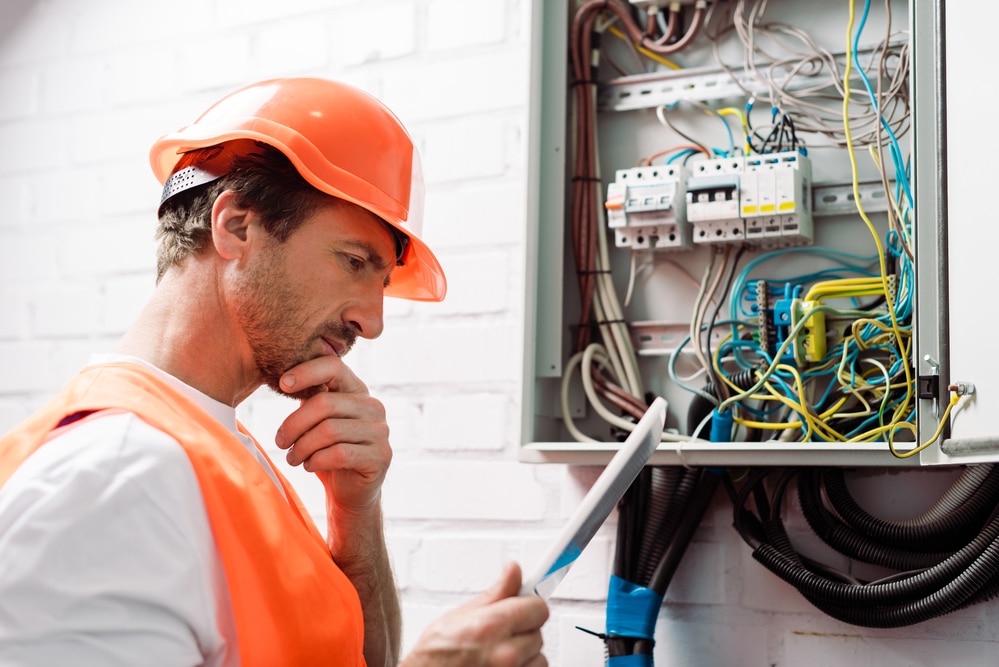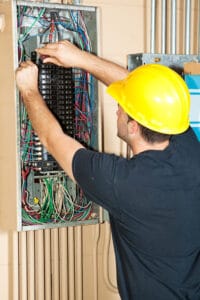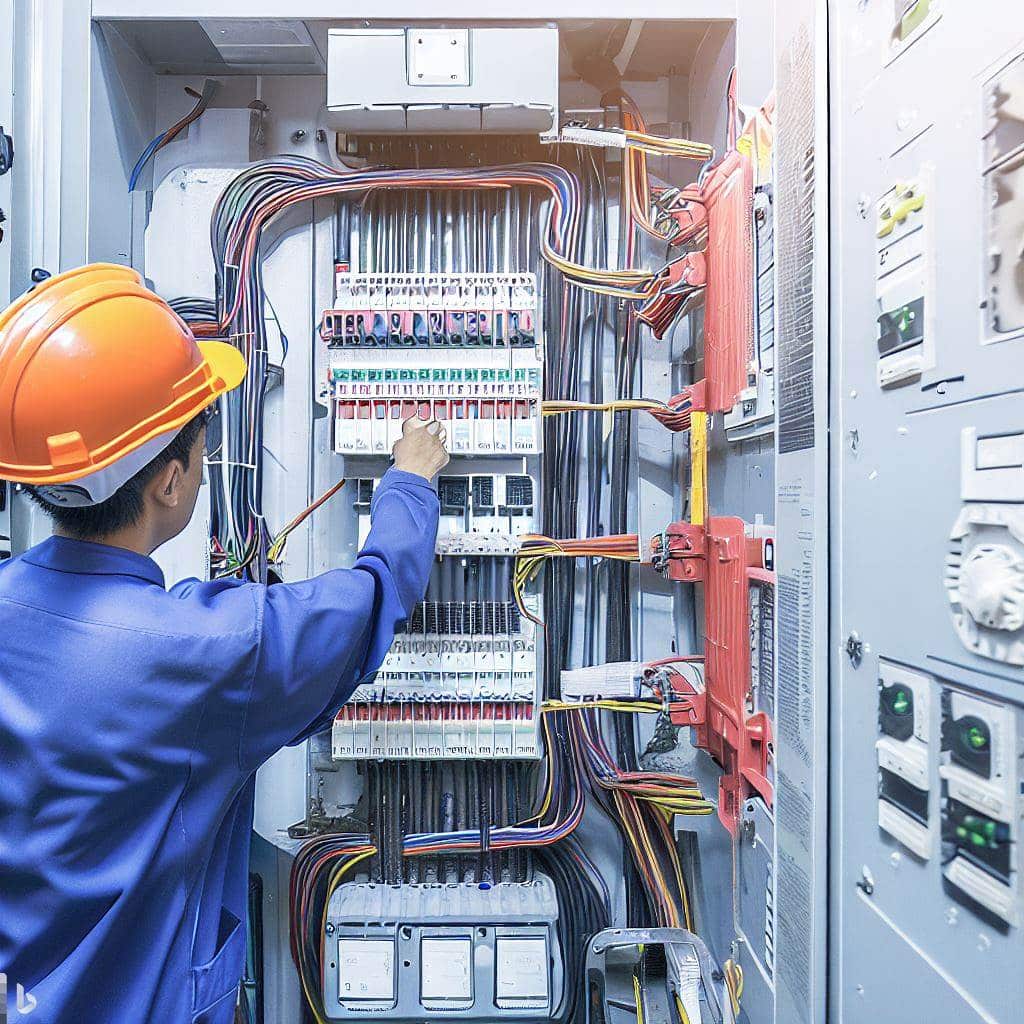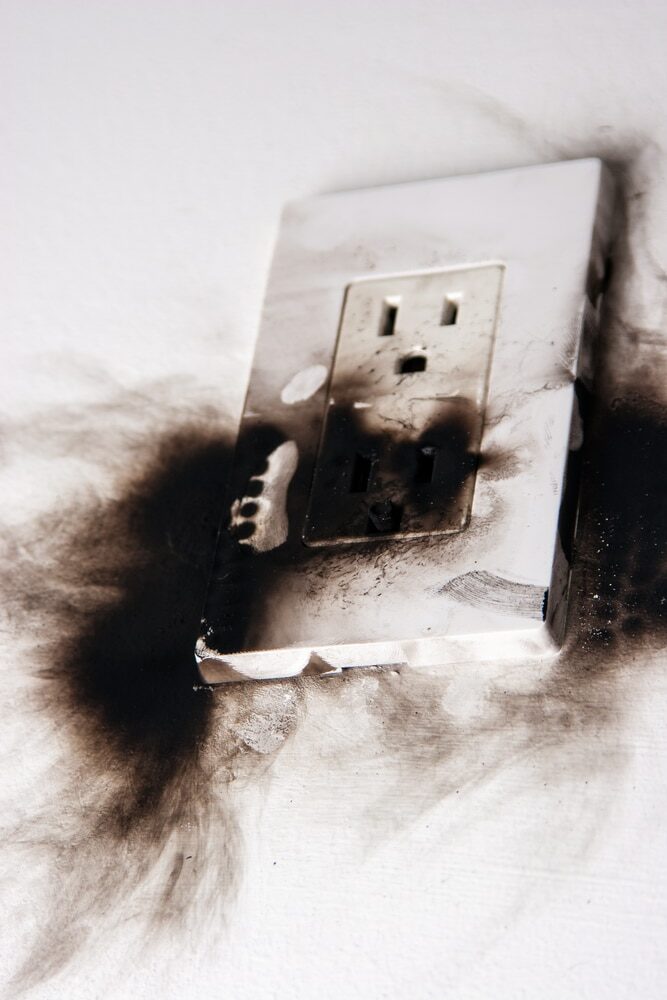9+ Best Electrical Safety Tips for 2023 – [PLUS DATA & FACTS]

Electrical accidents are common in all types of workplaces. You might not consider an office a high-risk environment, but consider the number of computers in an office building. Every unit is plugged into live outlets and carries the risk of electrocution or causing a fire if it’s not subject to regular safety inspections or misused.
Employees need to understand electrical safety measures to keep their workplace safe. That all starts with good solid electrical safety training – here are some top electrical safety tips to help you prevent accidents and protect your staff.

1. Educate Personnel About Live Electrical Hazards
Any area of your workplace that has live electricity is a potential hazard. There are obvious areas, such as live circuits, that tend only to be used by qualified professionals, but any wall outlet that hasn’t been switched off is a live hazard. Likewise, faulty or damaged equipment, such as frayed wire covers, is a live hazard.
Employees need to be trained to spot these hazards and report or deal with them appropriately. Switching off a wall outlet that has nothing connected to it is as important in the workplace as it is for your home’s electrical system. If you’d recommend a measure to keep your family safe, why would it be less important at work?
Likewise, employees should know when to report damaged insulation or fraying cord issues. Extension cords that are covered by carpet might be stepped on regularly – this will lead to the rubber cover eventually breaking down and creating a hazard. Frayed electrical cords are a safety hazard, and staff needs to be trained to recognize signs of wear and tear.
2. Switch Off Unused Electrical Appliances
Preventing fires and shocks at work is sometimes as simple as switching the power off. Whether it’s the staff room toaster or your computer, de-energized appliances carry no risk of shock. Turning the lights off at the end of the day is good practice – bulbs won’t blow and potentially trip other devices when you’re out if they’re off.
These electrical safety tips can save you money and help you stay safe! Switching off empty or inactive outlets is energy-efficient and a key safety measure.

3. Make Sure Electrical Equipment is Properly Tested and Tagged
You should have a qualified electrician regularly test and tag all electrical equipment. Cords, power sockets, and devices like computers and portable heaters must be tested and tagged.
The inspector will test electrical lines to ensure that they’re not overloading circuits and that there are no faults in cords or cables. Every new appliance should be tested and tagged as soon as possible. If you can’t find service marks denoting the last time an appliance was checked, switch it off and don’t use it until the device can be inspected.
4. Keep Electrical Cords Tied and Locked Away
Bundles of cords should be tied up independently and shut behind a physical screen where possible. Different cords shouldn’t be tied together – cords need to be kept distinct so you can tell which appliances they’re running between.
Exposed wires are a significant cause of fires. Reduce the chance of fire by keeping cords in an environment where sparks won’t hit other appliances or flammable surfaces. Electrical wiring should be placed at a safe distance from vulnerable equipment and shut behind doors wherever possible.
5. Use Ground Fault Circuit Interrupters (GFCI)
A ground fault circuit interrupter or GFCI is a type of circuit breaker that prevents power lines from overloading if they exceed their maximum wattage or suffer damage. These are mandatory to ensure the safe use of any appliance, especially those that rely on an extension cord.
Tripping on a long power cord is a common cause of electrical safety issues, and damaged extension cords carrying live electrical currents are major fire hazards.
Ground fault circuit interrupters should guard all plug outlets. Mediate the chance of electrical shock or electrical fires and protect extension cords with GFCIs.
6. Educate Staff About Conductors
Staff should know that handling electrical equipment with wet hands is a no-go, whether that’s changing a bulb in a lamp or plugging in basic appliances like a computer. Likewise, if an area has electrical issues or there are extension cords around, ensure these are switched off before floors are mopped. Electrical lines on wet surfaces are safety hazards – protect your employees with the right safety equipment and electrical safety tips.

7. Don’t Overload Sockets
A common cause of electrical fires is having too much electrical power coming through one outlet. Wherever possible, one outlet should have only one plug – power strips are convenient, but you can keep your workplace and home safe by avoiding them wherever possible.
One device per power socket reduces these electrical hazards and is recommended by the National Fire Protection Association (NFPA). Appliances connected but not in use aren’t just a safety hazard; they also use energy you’re paying for!
8. Only Let a Qualified Electrician Perform Maintenance
Besides ongoing staff education, having electrical equipment routinely inspected by a trained electrician is the best way to ensure safe usage. Changing bulbs is one thing, but fixing broken wires “because you’ve done it at home before” is a major electrical safety violation. Lay employees should never be in a position to attempt electrical repairs.
Electricity is incredibly dangerous. Professionals wear appropriate equipment to protect themselves against electricity and must go through hundreds of hours of training. Letting a staff member repair faulty extension cords is a potentially fatal accident waiting to happen and could also result in massive financial penalties.
9. Wear Appropriate Clothing in High-Risk Areas
Sometimes employees need to work in hazardous areas. This might include cupboards where there are boxes containing live wires or an area where there’s a socket that’s known to not be working properly. Often the staff members who have to work in these places are the custodial staff like cleaners – employers mustn’t forget that these workers need education and protection.
Appropriate clothing, such as rubber-soled shoes and thick gloves, should be made accessible to staff working in areas with faulty or live electrical equipment, alongside proper training.
10. Standardize Electrical Safety Training Using Videos to Prevent Accidents
One of our top electrical safety tips is to use standardized electrical video training. OSHA-compliant videos are a great way to ensure every staff member has access to the highest quality electrical safety education.
This will teach staff to identify and report problems, avoid hazardous areas, and follow basic protocols to minimize the chance of an accident. It’s just good sense.
Electrical Safety in the Workplace: Final Thoughts
Education is at the root of all health & safety in the workplace. Make sure your company is OSHA-compliant by mandating better training practices, improving communication when hazards are identified, and having your appliances tested regularly by a professional.